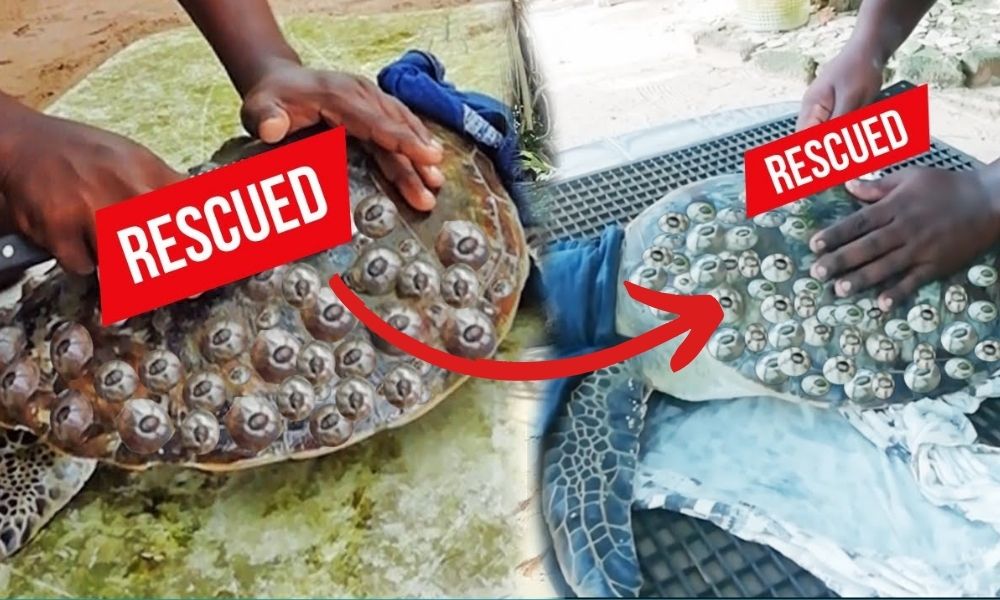A turtle takes several years to reach full size. Growth rate varies by species and environment.
Turtles are fascinating creatures that captivate both young and old alike with their unique appearance and slow, deliberate movements. One common question that often arises is, “How long does it take for a turtle to grow? ” The answer to this question is not as straightforward as one might think, as different species of turtles grow at varying rates.
Factors such as diet, environment, and genetics all play a role in determining how quickly a turtle will reach its full size. We will explore the growth process of turtles, the factors that influence their growth rate, and provide insight into the fascinating world of these ancient reptiles.
Evolution Of Turtles
Turtles have a long history, dating back to over 200 million years. They have undergone minimal changes, showcasing their remarkable ancient origins. Turtles have adapted to various environments, employing diverse survival strategies to thrive. Their unique features and behaviors have allowed them to withstand the test of time.
Life Cycle Of Turtles
Turtles are fascinating creatures, and understanding their life cycle can help us appreciate them even more.
Hatching From Eggs
After a female turtle lays her eggs in a nest on land, the eggs will incubate for about 45 to 90 days. The time it takes for the eggs to hatch depends on the species and environmental conditions. Once the baby turtles, or hatchlings, emerge from their eggs, they make their way to the water, where they will spend most of their life.
Growth And Development Stages
During the first few years of their life, turtles grow rapidly. Their growth rate slows down as they age, and they may take anywhere from 5 to 50 years to reach maturity, depending on the species. As they grow, turtles shed their scutes, or outer shell layers, and replace them with larger ones. They also develop more complex patterns on their shells.
Overall, the life cycle of turtles is a long and fascinating process, and understanding it can help us appreciate and protect these amazing creatures.
Factors Affecting Growth Rate
Turtle growth rates can vary significantly based on species and environmental factors. Different turtle species have distinct growth patterns, with some reaching maturity quicker than others. Environmental influences such as temperature, food availability, and habitat can also impact a turtle’s growth rate. It’s essential to provide the appropriate environment and diet to support healthy growth in pet turtles. Understanding these factors can help turtle owners optimize their pet’s development and well-being.
Comparison With Other Reptiles
Turtles grow at varying rates compared to other reptiles. The growth rate of turtles contrasts significantly with that of other reptiles. For example, the longevity differences between turtles and other reptiles are quite striking. Turtles can take several years to reach full maturity, while other reptiles may reach maturity much quicker.
Human Impact On Turtle Growth
Turtles can take several years to grow to their full size, with some species taking up to 20 years to reach maturity. Human habitat destruction has a significant impact on turtle growth, as it disrupts their nesting areas and food sources. Additionally, pollution and climate change can affect turtle growth by contaminating their environment and altering their natural habitats. These factors can delay the growth and development of turtles, making it essential to protect their habitats and reduce human impact on their ecosystems.
Conservation Efforts
Turtles take a long time to grow, with some species reaching maturity in 10-15 years. Conservation efforts play a crucial role in protecting turtle populations. Protection of nesting sites is essential to safeguard turtle eggs from predators and human disturbances. Rescue and rehabilitation programs aid injured or sick turtles, contributing to their survival and growth.
Myths And Misconceptions
Many people believe that turtles grow slowly, but this is not always true. Size misinterpretations are common, and people often mistake young turtles for adults. Additionally, growth rate fallacies also contribute to the confusion. Turtles grow at different rates depending on their species and environment. Factors such as temperature, diet, and habitat can affect their growth. For example, turtles living in warm climates tend to grow faster than those in colder areas. It is important to do proper research on your turtle’s species and provide them with the appropriate care to ensure healthy growth.
| Species | Growth Rate |
|---|---|
| Red-Eared Slider | 4-6 inches per year |
| Box Turtle | 1-2 inches per year |
| Painted Turtle | 2-4 inches per year |
Remember, proper care and attention can help your turtle grow to its full potential, and with patience, you can enjoy watching your pet turtle grow over time.
Future Research And Implications
Technological Advancements in Tracking: Researchers are utilizing advanced tracking technologies to monitor the movements and behaviors of turtles in their natural habitats. This allows for a deeper understanding of their growth patterns and the factors that influence their development.
Understanding Longevity in Captivity: Studying turtles in captivity provides valuable insights into their growth rates and lifespan. By observing their development in controlled environments, scientists can gather data to better understand the factors that contribute to their growth and overall health.
Conclusion
In essence, the growth rate of turtles varies depending on their species. Understanding this timeline can help you provide better care for your pet turtle. Remember, patience is key when witnessing the fascinating journey of a turtle’s growth and development.
Embrace the process!




Leave a Reply